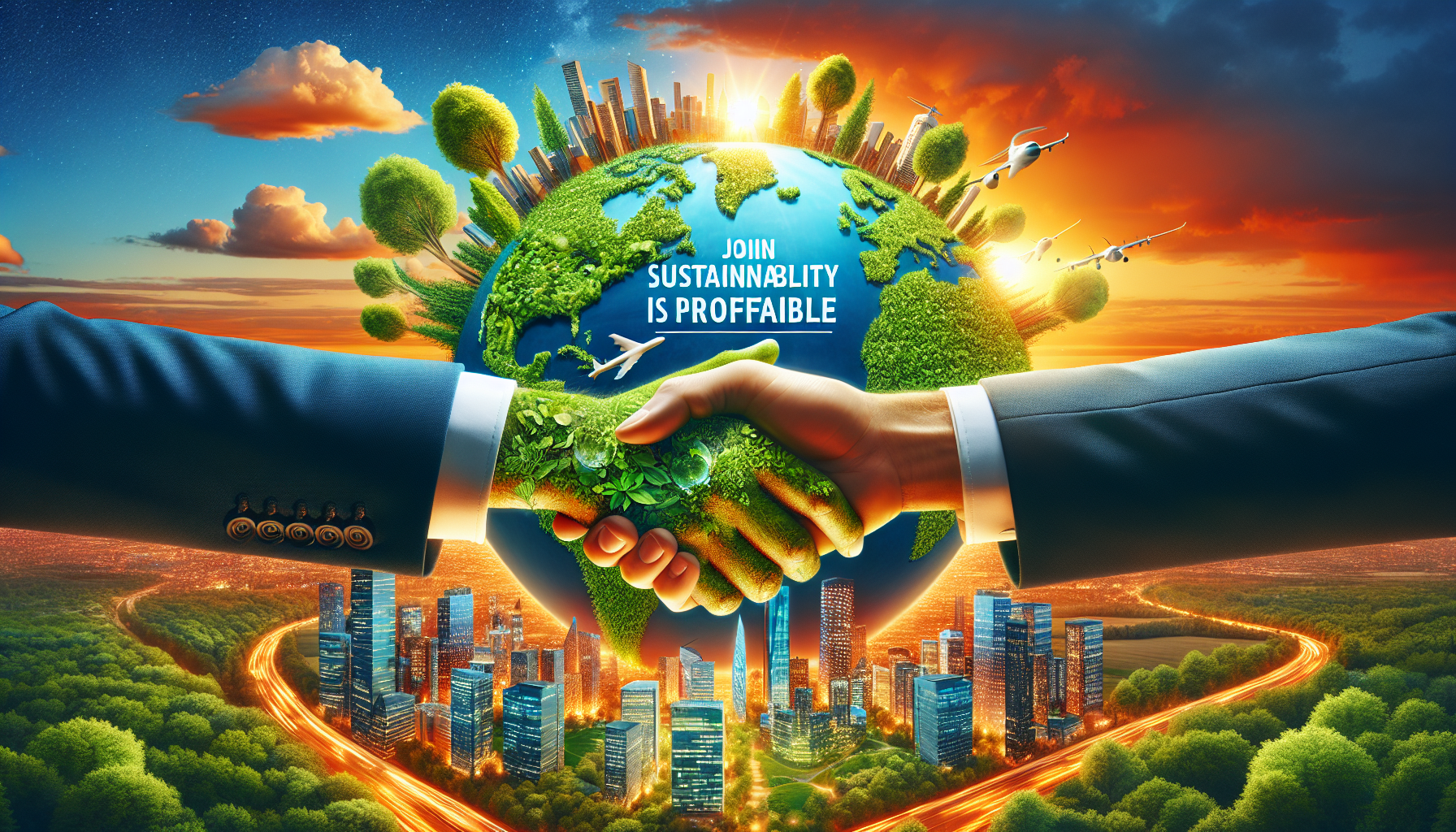Reducing the environmental footprint through responsible printing
In a world where environmental awareness is more acute than ever, businesses play a central role in driving change towards more sustainable practices. Responsible printing is one of the concrete and impactful initiatives making it possible to significantly reduce the environmental footprint of organizations.
Impacts of traditional printing on the environment
Conventional printing, although necessary for the daily life of businesses, is demanding in terms of energy and material resources. It induces significant consumption of paper, ink and energy, not to mention the greenhouse gas emissions associated with the production processes and end-of-life management of consumables and printing materials. In addition, the volume of waste generated by used ink cartridges and toners poses a real environmental problem.
Adoption of eco-responsible printing practices
Optimize print workflows is an essential first step. This includes the establishment of policies print management to track, control and reduce the quantity of printed documents. Among these steps, note the implementation of double-sided printing by default, a reduction in the margin of documents and the use of fonts that consume less ink.
Then, promote the recycling and the recovery Not only is ink cartridges an eco-friendly practice, but it can help reduce overall operating costs. Some manufacturers or suppliers offer cartridge take-back or refill programs, helping to reduce waste.
Business commitment to a sustainable future
Groups such as K.Line Or Holcim are setting an example with ambitious strategic plans aimed at reducing their carbon footprint. These efforts can be extended to areas such as printing, where the use of recycled paper or paper from sustainably managed forests and investment in energy-efficient printers are all actions that are part of this approach.
Technologies at the forefront of a cleaner future
The use of innovative technologies such as optimization software helps reduce environmental impact. As evidenced by the work ofEfficacy, which is working to develop solutions to better control the energy-carbon footprint of companies.
In addition, initiatives such as those of festivals committed to sustainable development, prove that reducing the carbon footprint is possible on a larger scale, including in sectors where digital technology plays a dominant role.
For a company focused on sustainability, adopting a responsible printing strategy is not only an ethical act, but also an economically viable decision. These practices help reduce costs while improving the company’s image, a crucial advantage in an increasingly environmentally conscious market. By implementing such initiatives, companies affirm their role as agents of change, guiding society towards a greener future.
Choice of ecological materials for a greener print

We live in an era where sustainable development is no longer an option but an imperative necessity. This is what the transformation of Milan into a city underlines sustainable And polycentric, an ambitious project highlighting a respectful integration of natural resources into town planning. In this vein, choosing eco-friendly materials for printing offers businesses an opportunity to contribute to this green revolution, while making substantial savings.
It is essential to look at the 2nd barometer of sustainable construction, highlighting continued innovation in ecological building practices, reflecting a collective desire to rethink our resources. At the same time, the sector of bio-based materials displays its ambitions: to double its production by 2025, a positive dynamic advocating a greener future.
Ecological printing is part of this trend, combining advanced technologies and respect for the environment. Let’s take an example from the recent storm water treatment plant in Champigny, dedicated to purifying and recycling water in an ecosystem approach. Inspired by such projects, companies can implement sustainable printing practices by choosing ecological inks and papers, eco-designed equipment and by establishing stricter and more efficient printing waste management.
Arnaud Tractère, new general manager of Saint-Gobain Weber France, carries this vision of a future where construction materials and techniques reflect real environmental awareness. This spirit also translates into the field of printing, where every gesture counts to reduce the ecological footprint. By encouraging the use of materials recycled Or recyclable, professional printers become allies of the environment.
This responsible material choice is all the more relevant in a context where equal pay and diversity are gaining momentum, as evidenced by the unique, predominantly feminized construction site in France, combining bio-based and equity. To be in tune with these societal changes, opting for green printing is also a way to promote the ethical commitment of your company.
Finally, head towards the most economical heaters for 2023 is not only a question of comfort, it is also an ecological choice. Likewise, choosing printing equipment that saves energy and consumables is aligned with this quest for efficiency and sustainability. This demonstrates that greener solutions are within reach and can go hand in hand with significant savings.
In summary, integrating sustainable development into your printing choices is not just an environmental approach; it is a 360-degree vision that embraces the evolution towards a more conscious world, where every action and decision taken today shapes our environment tomorrow.
Printing Strategies to Minimize Waste

With a view to promoting sustainable development, the waste reduction related to printing is essential. Companies, aware of the ecological and economic issues, are more than ever called upon to reconsider their traditional printing methods. They must adopt a proactive approach by integrating more environmentally friendly practices, while maintaining operational efficiency.
Optimal Resource Management
The first step towards minimizing print waste is optimizing resource management. This involves evaluating the real need to print a document. Can we share it digitally? Cloud storage, online sharing platforms and virtual collaboration tools drastically reduce the need for physical prints.
It is also imperative to make employees aware of the consequences of excessive printing and to implement a policy ofresponsible printing. For example, the use of double-sided printers by default or the implementation of printing systems requiring badge authentication, making it possible to control and reduce the volume of printing.
Choice of Sustainable Materials
The use of FSC or PEFC certified paper, from sustainably managed forests, or even recycled paper, significantly minimizes the impact of printing on the environment. Ecological inks, such as soy-based or vegetable-based inks, should also be favored given their lower impact on air quality and their better degradability.
Eco-efficient equipment
Businesses must turn to equipment that uses less energy and consumes less toner or ink. Professional printers with the ENERGY STAR label or other ecological certifications are preferred. These devices provide energy saving features and reduce the frequency of cartridge replacements, leading to a significant reduction in waste.
Return and Recycling Programs
Implementing ink and toner cartridge return and recycling programs is another cornerstone of the waste reduction strategy. Eco-organizations like Valobat are aiming for ambitious recycling objectives for 2024. Such programs limit the accumulation of dangerous residues and encourage circular economy practices within companies.
Extended Producer Responsibility (EPR)
EPR is a regulatory principle that pushes producers to integrate the end of life of their products from the design phase. Organizations specializing in the building sector are currently working to consolidate their position in terms of reducing carbon emissions, like Rector with its biosourced systems. This type of approach can and should be an inspiration for the professional printer sector.
In addition, it is essential that companies inform themselves about current concerns, such as those expressed by Capeb or the FFB, in order to understand the challenges facing the industry, particularly in terms of waste management in the sector. of the building.
Ultimately, the sustainable printing strategy is a crucial component of a company’s overall carbon trajectory. Every action counts, from the choice of printing materials to the recycling of consumables, including rational and measured use of devices. These concrete measures aim not only to preserve the environment, but also to optimize operational efficiency and achieve substantial savings. A commitment not to be neglected for any entity conscientious of its ecological footprint and concerned about future generations.
Sustainable printing: collaboration between eco-responsible companies and suppliers

The era of environmental responsibility greatly influences the entrepreneurial fabric. From now on, partnerships between companies And eco-responsible suppliers are not only recommended but become a fundamental pillar to strengthen the sustainability business models. In the field of printing, this collaboration takes a strategic and avant-garde turn, potentially signing a new page of “The future of capitalism“.
Sustainability is present in all spheres of economic activity, encouraging companies to review their partnerships. Like the Partners of Paris 2024, which are involved in a global event concerned about its ecological impacts, companies must choose suppliers aligned with their sustainability values. This goes hand in hand with the developments observed in the sector of aeronautics, where aircraft manufacturers and airlines work hand in hand to significantly reduce their carbon footprint.
From this perspective, sustainable printing is emerging as a major trend. The emphasis is placed on printing practices combining performance and respect for the environment. Whether it concerns the rental or acquisition of professional printers, the responsible company will focus on eco-designed solutions, low in energy consumption, using recycled materials or less polluting consumables.
In this regard, selecting an eco-responsible supplier is not an easy task. This involves scrutinizing the proposals to find a partner presenting a range of environmentally friendly services, but also a after-sales service irreproachable. The goal is to ensure an optimal life cycle of equipment while controlling costs and supporting the local economy.
Let us therefore take stock together of the concrete advantages of these virtuous collaborations, both for the ecological and economic dimensions and for the strengthening of the societal commitment of the actors involved.
Ecological Benefits
When is it aboutlasting impression, the first benefit is undeniably ecological. Suppliers engaged in this niche offer less energy-consuming equipment and a notable reduction in the use of natural resources. These practices make it possible to significantly reduce the ecological footprint of printing activities, an objective that has become central to ambitious initiatives such as the ecological transition in aeronautics.
Economic Benefits
On an economic level, a partnership with a supplier focused on eco-responsibility often rhymes with cost reduction. Indeed, durable equipment generally requires less maintenance, has a longer lifespan and uses fewer consumables. These savings are directly reflected on the financial balance sheet of companies which see in them a renewed operational efficiency – a cornerstone for the future of capitalism advocated by more conscious business ecosystems.
Strengthening Social Commitment
The adoption of sustainable printing practices also reflects a desire to act as a responsible corporate citizen. By favoring partnerships with suppliers aligned with the requirements of the sustainability, companies demonstrate a commitment that goes beyond the commercial framework to address social and environmental issues. This movement is logically part of the new paradigm of capitalism, where responsibility and profitability must go hand in hand.
In conclusion, the collaboration efficiency between eco-responsible companies and suppliers in the field of printing is not just a trend, but a necessary impetus towards economic development that is more respectful of our planet. Sustainable printing players are actively participating in the emergence of an entrepreneurial model that considers economic performance as inseparable from respect for the environment and social well-being.
Recycling and reuse of printed products to promote the circular economy
The transition to a circular economy is not only becoming a necessity in the face of the climate emergency, but it is also becoming a strategic opportunity for companies concerned about their environmental responsibility and wishing to innovate in terms of resource management. In this momentum, the recycling of printed products plays a leading role by allowing materials to be reintroduced into the production cycle, thus reducing the carbon footprint and promoting the efficient use of resources.
Material Recovery and Carbon Footprint Reduction
Initiatives from companies like Coralium, with the construction of their low-carbon aluminum foundries, are setting an example in terms of material recovery. These advances demonstrate the importance of rethinking the end of life of printed products with a view to their recycling.
Innovation and Eco-Responsible Design
Innovation in packaging by companies such as Tetra Pack, which recycles its packaging into a range of 3D printed furniture, or MAPEI with its eco-designed palettes, perfectly illustrates the potential of eco-responsible design of printed products. These approaches minimize waste and promote the use of materials with a lower ecological impact.
Optimization of Waste Management
In order to improve the network of collection points, the implementation of the EPR (Extended Producer Responsibility) sector is becoming clearer, as illustrated by the efforts of eco-organizations described in the relevant article. This promotes efficient collection and better traceability of inert waste from printed products.
Participation in the local economy and Sustainable Public Order
Supporting the local economy is crucial. The commitment to sustainable public procurement, implemented by communities that borrow sustainable pathways, highlights the importance of selecting printing partners that promote recycling as part of their processes, thereby strengthening the positive impact on the regional circular economy.
Commitment of Companies and Institutions
Companies and institutions set standards to ensure public real estate projects are resilient and environmentally friendly, as described in the absolute rules set by the State. These measures also involve rigorous and ecological management of printed products used in construction and interior decoration.
Recycling printed products, with a view to promoting the circular economy, is no longer simply a preference but a requirement. Every action, from reducing resource use to designing efficient return systems for used materials, contributes to reducing environmental impact and strengthening overall sustainability. The integration of these principles by companies reflects not only an awareness but also a deep commitment to broader ecological responsibility, auguring a sustainable path for our common future.


Leave a Reply